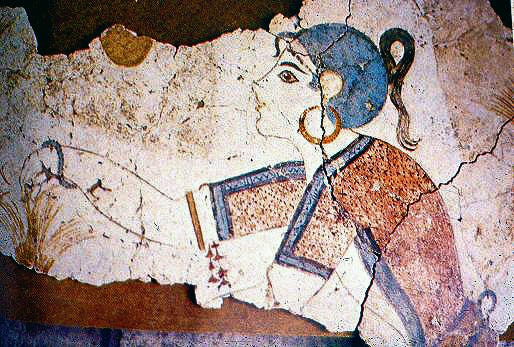Even if you’re not an artist, you’ve probably seen some of the names of colors on tubes of paint: burnt umber, yellow ochre.
Have you ever wondered what those names mean? They’re the pigments that give the paints color. Many of them have been used since the Bronze Age or even earlier; some of them can be found in Paleolithic cave paintings dating to 35,000 or more years ago!
It seems we’ve always loved to adorn our surroundings and express ourselves this way.
Minoan art in particular is quite lively and colorful. It’s amazing that the paintings have held their color so well over the 3500-plus years since they were created. This is partly due to the nature of frescoes, with the paint soaking into the plaster and being held there far more securely than paint that only sits on the surface of a wall or canvas.
But it’s also partly due to the nature of the pigments themselves. This week’s Minoan Path blog post details which pigments the Minoans used to create those glorious colors in their frescoes, why most of them haven’t faded much at all, and why one in particular has disappeared almost entirely.
The Colors of the Minoan World
How do you color your world?






I love the question "How do you colour your world?"
My answer is with the colours of nature. I have yellow mimosa on one window sill and white roses on the other, in the kitchen. A vase of vibrant pink tulips is on the dining table.